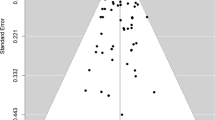Abstract
Risk aversion experiments such as those by Holt and Laury (2002, 2005) measure risk aversion by examining subjects’ responses to a series of probability-ordered choices. Subjects are paid real money rewards, using the random round payment method in which the amount is determined by one randomly selected decision. The findings reported here were obtained from 119 subjects who confronted the same choice set and payment amounts, but 60 of these subjects were paid using the random-round method while the remaining 59 were paid based on an average of all their choices, the accumulated value method. The accumulated value payment method simulates portfolio returns, as opposed to returns from stand alone investments. Results indicate that accumulated value subjects took more risk and made more inconsistent decisions.
Similar content being viewed by others
Notes
The advantages of using a video game for behavioral experimentation are fully elaborated in Lawson and Lawson, 2009. The basic rationale concerns the importance of providing context for decision making in order to elicit natural behaviors. Video games accomplish this task with relative ease, compared to the typical laboratory setting, while at the same time preserving the advantages of the lab that are often lacking in field experiments, e.g., the ability to control and manipulate relevant variables and/or to replicate experiments.
Our experiments did not include a tenth decision pair, as our training sessions taught subjects how to play the game and, in the process, allowed us to screen for adequate understanding of the game.
References
BBN Technologies. (2006). Situation authorable behavior research environment: a game-based testbed for psychological research. Prepared for Defense Modeling and Simulation Office of the U. S. Department of Defense, U. S. Air Force Research Laboratory, and U.S. Army Research Laboratory, contract number FA8650-04-C-6437.
Beetsma, R. W. J., & Schotman, P. C. (2001). Measuring risk attitudes in a natural experiment: Data from the television game show Lingo. The Economic Journal, 111, 821–848.
Binswanger, H. P. (1980). Attitude toward risk: Experimental measurement in rural India. American Journal of Agricultural Economics, 62, 395–407.
Harrison, G. W., Johnson, E., McInnes, M. M., & Rutstrom, E. E. (2005). Risk aversion and incentive effects: Comment. American Economic Review, 95(3), 897–901.
Harrison, G. W., Lau, M. I., & Rutström, E. E. (2007). Estimating risk attitudes in Denmark: A field experiment. Scandanavian Journal of Economics, 109(2), 341–368.
Holt, C. A., & Laury, S. K. (2002). Risk aversion and incentive effects. American Economic Review, 92(5), 1644–1655.
Holt, C. A., & Laury, S. K. (2005). Risk aversion and incentive effects: New data without order effects. American Economic Review, 95(3), 902–904.
Kachelmeier, S. J., & Shehata, M. (1992). Examining risk preferences under high monetary incentives: Experimental evidence from the People’s Republic of China. American Economic Review, 82(5), 1120–1141.
Laury, S. K. (2006). Pay one or pay all: random selection of one choice for payment. Experimental Economics Center, Andrew Young School of Policy Studies, Georgia State University Experimental Economics Center Working Paper Series number 2006–24.
Lawson, L. L., & Lawson C. L. (2009). Video game-based methodology for business research. Simulation & Gaming, 41(3), 360–373.
Lee, J. (2007). Repetition and financial incentives in economics experiments. Journal of Economic Surveys, 21(3), 628–681.
Von Neumann, J., & Morgenstern, O. (1944). Theory of games and economic behavior. Princeton: Princeton University Press.
Author information
Authors and Affiliations
Corresponding author
Rights and permissions
About this article
Cite this article
Lawson, L.L., Lawson, C.L. The Effect of Payment Methods on Risk Aversion. Atl Econ J 39, 249–260 (2011). https://doi.org/10.1007/s11293-011-9278-y
Published:
Issue Date:
DOI: https://doi.org/10.1007/s11293-011-9278-y




